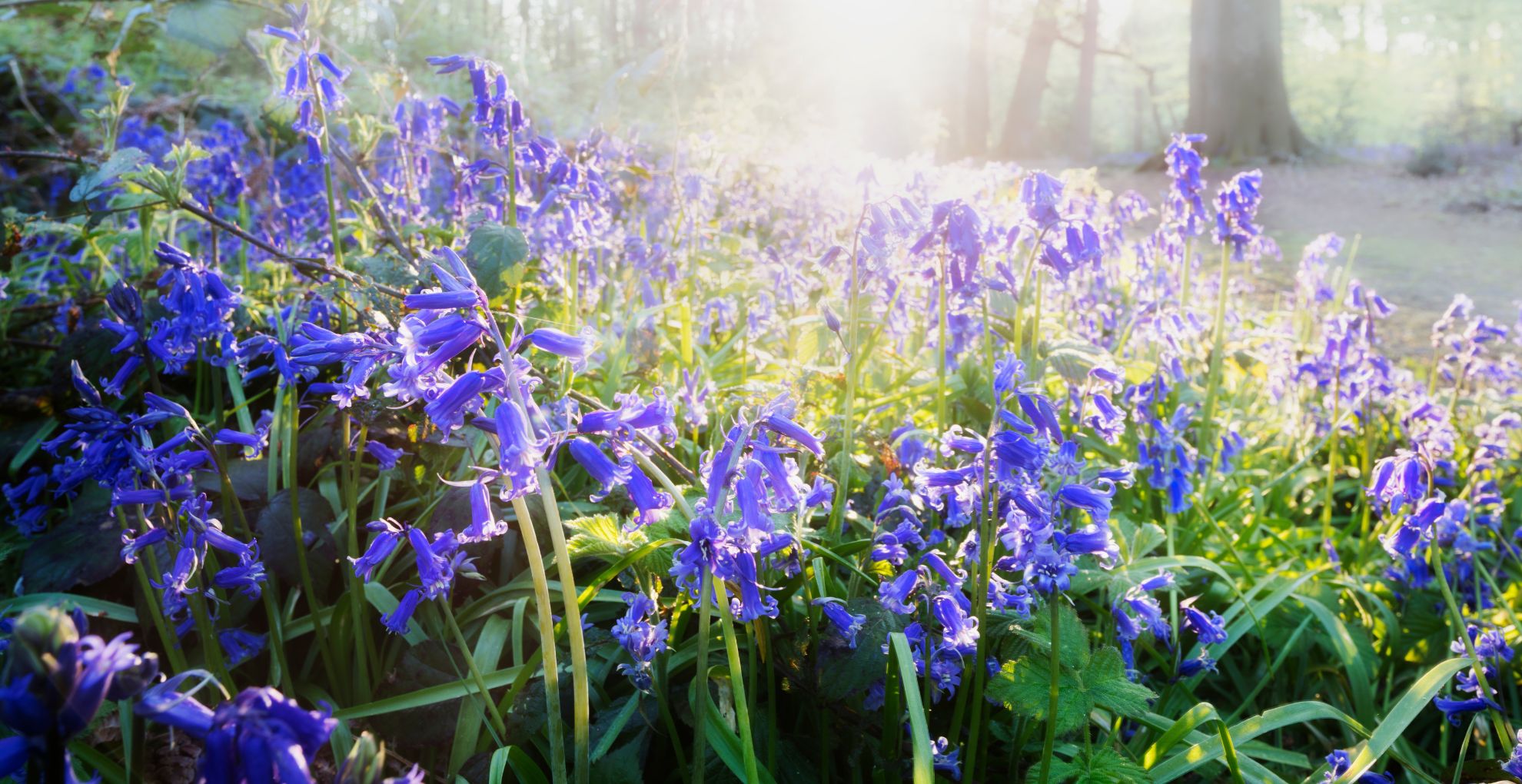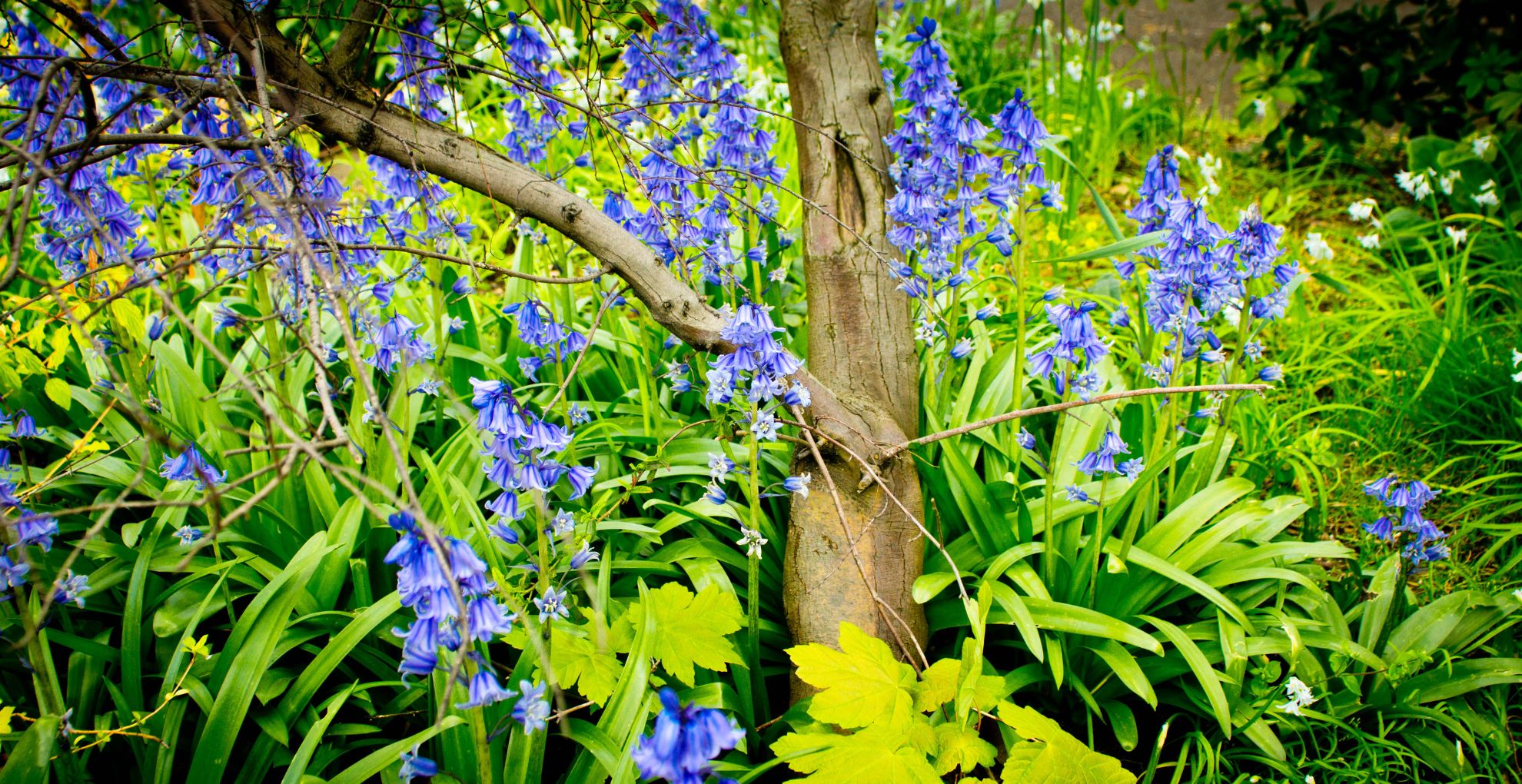What to do with bluebells after flowering for a beautiful blue comeback next year
Your bluebells can come back bigger and brighter than ever, so long as you follow these expert tips


The strong, sweet scent of bluebells is everywhere this month, as a sea of nodding cerulean flowers carpets wooded areas and gardens alike. All too soon, however, these pretty blooms will disappear once again – so what to do with bluebells after flowering?
Easily one of our favourite garden trends of all, bluebells aren't just beautiful; they're strongly associated with ancient woodlands and folklore – perhaps even more so now the native bluebell is under threat here in the UK.
With that in mind, then, it makes sense that the green-fingered among us want to do everything they can to nurture their beloved bluebells. Thankfully, similar to navigating what to do with tulips after flowering, there are easy ways to do right with this popular plant.
Experts explain exactly what to do after they've faded to help them get ready for a repeat show next year.
What to do with bluebells after flowering
Before you roll your sleeves up and get to work on saving your bluebells, it's worth determining which variety has made its home in your garden.
"Do you have English bluebells or a Spanish hybrid?" asks award-winning garden designer Zoe Claymore.
Going on to explain that it's the floral equivalent of the great red squirrel vs grey squirrel debate, Zoe adds that "foreign bluebells are larger, more vigorous and can interbreed with English natives, so if you live near ancient woodland, be sure to buy English only".
Sign up for the woman&home newsletter
Sign up to our free daily email for the latest royal and entertainment news, interesting opinion, expert advice on styling and beauty trends, and no-nonsense guides to the health and wellness questions you want answered.
"Most sold now are hybrids or Spanish, so check," she urges.

Zoe Claymore is a multi-award-winning garden designer based in London. She focuses on creating outdoor places with emotional connection and ecological integrity for her private and commercial clients.

The Wildlife Trusts agrees, telling plant lovers to "be careful if you prefer non-native varieties in your planting as species can easily escape – it’s best to dispose of cuttings or bulbs carefully and never plant anything in the wild."
With that caveat in place, then, how can we help give bluebells a boost after flowering and transform them into the sustainable garden idea of our dreams?
Here's everything you need to know.
What do I do when my bluebell flowers go over?
"Bluebells will usually flower between late March and early May, and last around three weeks," says Craig Wilson, co-founder, director and in-house gardening expert at Gardeners Dream.
"Once they flower, I’d recommend feeding them with a liquid plant food like Miracle-Gro All Purpose Concentrated Liquid Plant Food from Amazon, as this will help to strengthen them and build their size in preparation for the following year."
When it comes to deciding what to do with bluebells after flowering, you'll find there are a few courses of action available, depending on whether or not they are English natives or not.

Craig Wilson, co-founder and director of Gardener's Dream Ltd has established himself as a key figure in the online gardening industry. With over two decades of plant knowledge and gardening experience, he takes pride in sharing his top tips and tricks for the garden.
Dealing with English bluebells
English bluebells are fabulously low maintenance, as all you need to do is (wait for it) leave them to die back after flowering.
“Once your bluebells start to die back naturally, try to avoid mowing the lawn, or you could stunt the following years' growth," says Craig – a lawn care mistake that is all too easy to make.
"If you want to avoid the bluebells spreading throughout your garden, make sure to remove any faded flower spikes to prevent the plants from self-seeding – but be sure to wear gloves, as the sap is incredibly irritating to the skin.”

RRP: £14.99 | These Gold Leaf RHS collections Chelsea Ladies Comfortable Leather Gardening Gloves have been designed with comfort in mind, making it easier than ever to complete your gardening tasks.

RRP: £4.00 | Made from durable materials to ensure a lasting protection, these brightly-coloured gardening gloves do exactly what they say on the tin – which is ideal for any outdoor task.

RRP: £17.49 | Every bit as aesthetically pleasing as they are durable, these ultra-soft gloves have been created in a hardwearing fabric (with extra padding around the palm for added comfort).
The Woodland Trust adds that, after your bluebells have finished leafing and flowering each year, you should avoid cutting the foliage off.
"The leaves use sunlight to make food which strengthens the plant for the following year," they explain. We know this also to be true when considering what to do with daffodils after flowering.
Dealing with Spanish or hybrid bluebells
Wondering what to do with Spanish or hybrid bluebells after flowering? Well, there are two courses of action available to you.
1. Help them on their way
"It's important to deadhead your Spanish or hybrid bluebells after flowering, as this will help to reduce seeding," explains Zoe.
"Once this is done, you should allow the rest of the plant to die back naturally – and consider taking steps to reduce their spread/vigour by removing some of the bulbs and disposing of them, too."
2. Banish the flowers entirely
If you live near ancient woodland or protected countryside, it's worth considering whether or not it's best to get rid of the flowers entirely by digging up and disposing of the bulbs.
Should you decide to do so, be sure to pop your bulbs in your council garden waste collections as opposed to your compost heap, as this is the best way to avoid them spreading.
FAQs
When should you cut bluebells back?
While you can lift and divide bluebells after flowering (if you really want to), your best bet – when dealing with English native bluebells, that is – is to leave them well alone after flowering.
Why? Because their foliage will help them create the food and energy they need to grow back next year, so gardeners advise that you leave these plants to their own devices and avoid whipping out the lawn mower until they've died back completely.
Remember: remove the faded flower spikes to prevent the plants self-seeding and spreading around your garden – and be sure to deadhead any Spanish or hybrid varieties for that very same reason, too.
Should I dig up bluebells?
Again, it depends on the variety: English native bluebells are actually a protected species in the UK, so it's against the law to intentionally pick, uproot or destroy bluebells.
Spanish or hybrid bluebells, however, have been deemed a threat to the aforementioned species, so many gardening experts will advise digging up their deep-rooted bulbs and disposing of them – especially if you live near ancient woodland or protected countryside.
How can you tell if a bluebell is English or Spanish?
English bluebells are beautifully scented, with droopy heads of violet-blue flowers.
Spanish bluebells, on the other hand, are larger, a lighter shade of blue, and unscented. You'll find that their flowers are much more upright, too.
Hybrids are much harder to identify, so it's well worth calling in an expert to help.
Now that you know what to do with bluebells after flowering, you can go forth and tend to your gently nodding blooms with confidence. Fingers crossed that, with a little TLC, you'll be able to secure another gorgeous display of blue next spring...

Kayleigh Dray is an experienced writer and editor within the world of digital journalism. She kicked off her career in magazines with Cosmopolitan as a news writer. Kayleigh then went on to become part of the digital editorial team at Closer, before a successful seven-year stint at Stylist, where she took command as the site’s editor and editor-at-large.
Nowadays, Kayleigh can be found freelancing for a myriad of titles including Woman & Home, along with a role at Ideal Home where she waxes lyrical about her true love: gardening. She is currently giving her own backyard a woodland-inspired makeover – and there have been whispers of a vegetable plot, too.
-
 Considering a summer hair refresh? Demi Moore’s chic bob transformation is all the inspiration you need to book that salon appointment
Considering a summer hair refresh? Demi Moore’s chic bob transformation is all the inspiration you need to book that salon appointmentChop, chop, it's time to take a trip to the salon
By Sennen Prickett
-
 Helen Mirren just embraced Cartier's signature colour on her lips - and this easy trick will make it less intimidating to replicate
Helen Mirren just embraced Cartier's signature colour on her lips - and this easy trick will make it less intimidating to replicateWhen in doubt, do as Helen Mirren does and steer clear of matte formulas...
By Naomi Jamieson